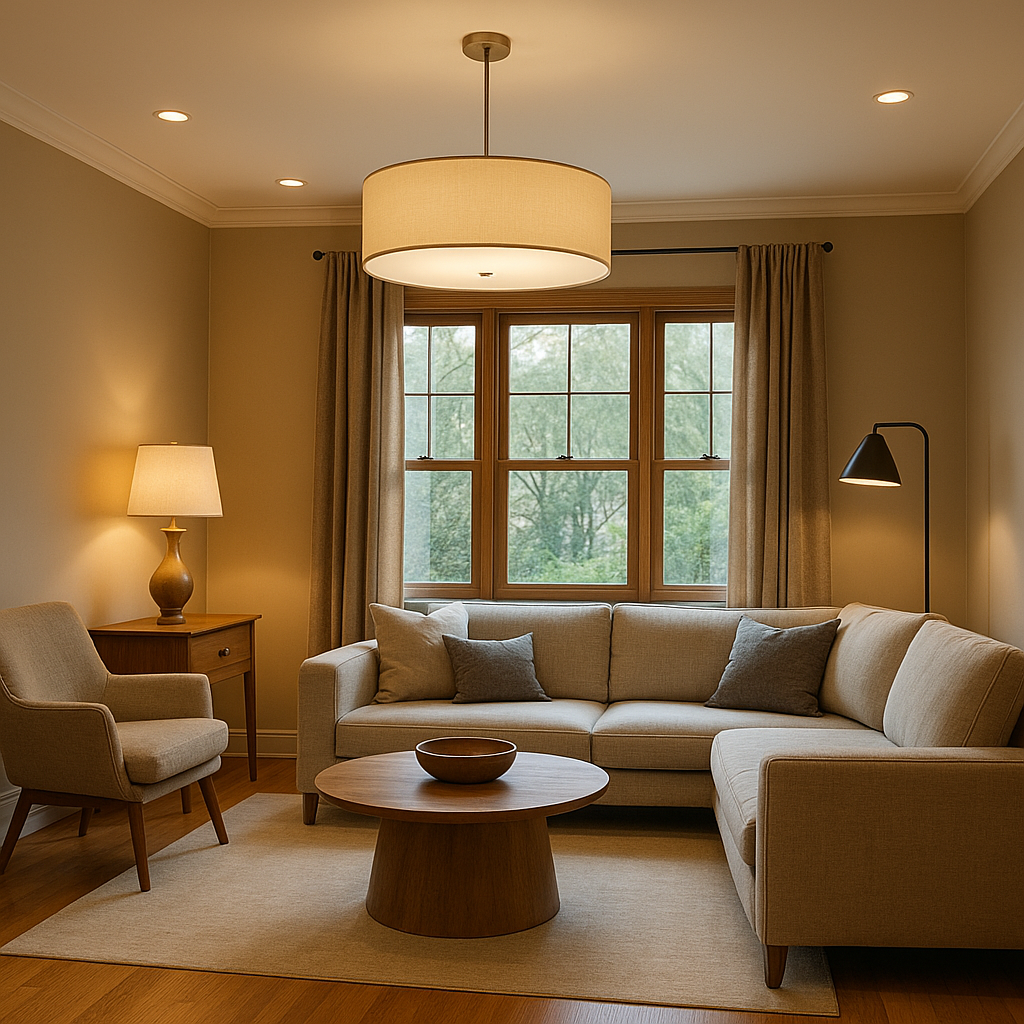Lighting plays a key role in how your home feels, functions, and looks. The right lighting not only brightens a space but also creates atmosphere, enhances décor, and improves usability. Every room in your home has unique needs, so a one-size-fits-all approach doesn’t work. To achieve a well-lit and comfortable home, you need to understand the basics of lighting types, placement, and design, and tailor them to each space.
Understand the Three Main Types of Lighting
To create effective lighting, it’s essential to layer these three types:
- Ambient Lighting – This is the main source of light in a room, often coming from ceiling fixtures, chandeliers, or recessed lights. It provides overall illumination and sets the general mood.
- Task Lighting – Designed to help you see clearly for specific activities like reading, cooking, or working. Examples include desk lamps, under-cabinet lighting, and pendant lights over kitchen islands.
- Accent Lighting – Used to highlight features or add visual interest. Think wall sconces, spotlights on artwork, or LED strips on shelves.
Balancing all three types ensures both function and style in any room.
Living Room Lighting
The living room is a versatile space for relaxing, entertaining, and sometimes working. Combine a central ambient light, such as a chandelier or flush mount, with task lights like table and floor lamps near seating areas. Accent lighting, such as wall sconces or picture lights, can showcase artwork or architectural details. Use dimmers to adjust brightness for different activities.
Kitchen Lighting
The kitchen requires bright, functional lighting for cooking and food prep. Layer recessed lights or a central ceiling fixture for ambient light, and install task lighting under cabinets to illuminate countertops. Pendant lights over the kitchen island offer both style and function. Consider warm white bulbs for a cozy yet functional atmosphere.
Bedroom Lighting
In the bedroom, lighting should create a relaxing environment while supporting tasks like reading. Overhead fixtures provide general illumination, but bedside table lamps or wall-mounted sconces are essential for reading in bed. Use soft, warm light for a calming effect, and consider blackout shades to control natural light.
Bathroom Lighting
Bathrooms need bright, clear lighting for grooming, but harsh shadows should be avoided. Place sconces or vertical fixtures on either side of the mirror for even illumination. Overhead recessed lights can brighten the entire space, while dimmable accent lighting around a tub can create a spa-like atmosphere.
Home Office Lighting
Good office lighting boosts productivity and reduces eye strain. Position your desk near a source of natural light, but supplement it with a bright, adjustable desk lamp. Overhead ambient light prevents dark corners, and accent lighting can add warmth without distracting from work tasks.
Dining Room Lighting
A statement chandelier or pendant over the dining table provides both light and a focal point. Install a dimmer switch to adjust brightness for different occasions—brighter for working or playing games, softer for meals and conversation. Accent lights such as wall sconces can enhance ambiance.
Hallways and Entryways
These transitional spaces benefit from bright, welcoming lighting. Flush mounts, recessed lights, or pendant fixtures work well in hallways, while a chandelier or lantern-style pendant can make a statement in an entryway. Accent lighting can highlight artwork or architectural details.
Choosing the Right Bulbs
The type of bulb you choose affects brightness, color temperature, and energy efficiency:
- LEDs – Energy-efficient, long-lasting, and available in various color temperatures.
- Incandescents – Warm, soft light but less efficient and shorter lifespan.
- Halogen – Bright, natural light but can get hot.
For a cozy feel, choose warm white (2700K–3000K). For task-heavy areas like kitchens or offices, opt for cool white or daylight bulbs (3500K–5000K).
Consider Dimmers and Smart Lighting
Dimmers give you control over brightness, allowing one fixture to serve multiple purposes. Smart lighting systems let you adjust color, brightness, and schedules via an app or voice control, adding convenience and energy savings.
Placement Tips for Perfect Lighting
- Avoid placing lights directly above mirrors or workspaces if they create shadows.
- Use multiple smaller lights rather than a single overly bright source.
- Highlight focal points like artwork, fireplaces, or textured walls with accent lights.
- Keep scale in mind—oversized fixtures can overwhelm small rooms, while tiny lights may look lost in large spaces.
Final Thoughts on Lighting Every Room
The right lighting transforms how a space feels and functions. By layering ambient, task, and accent lighting, selecting the right fixtures and bulbs, and placing them thoughtfully, you can enhance both the beauty and practicality of your home. A well-lit space is more than just bright—it’s inviting, comfortable, and tailored to your lifestyle.

